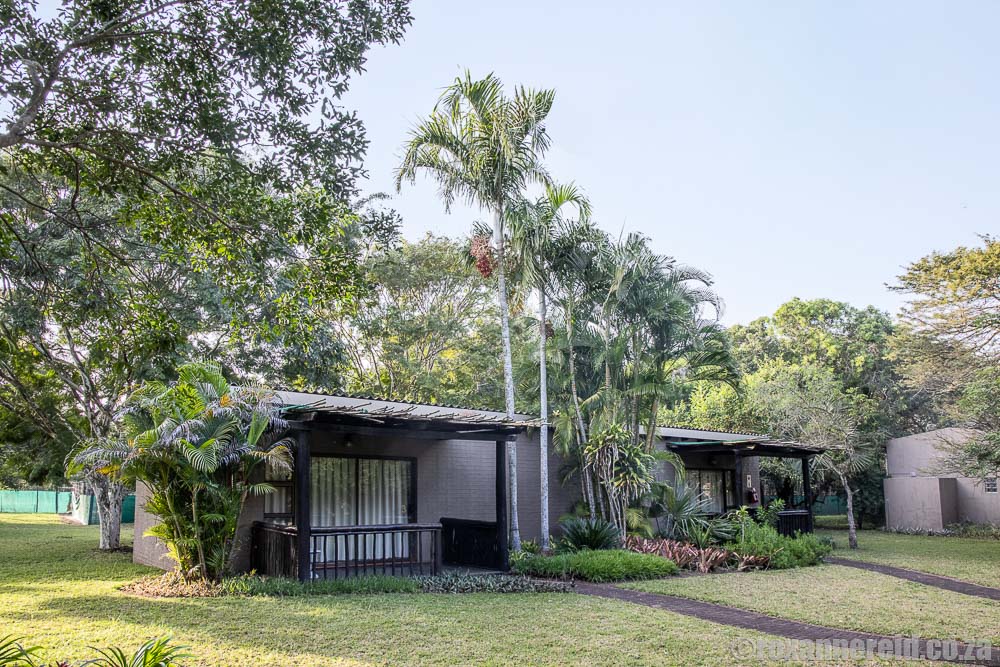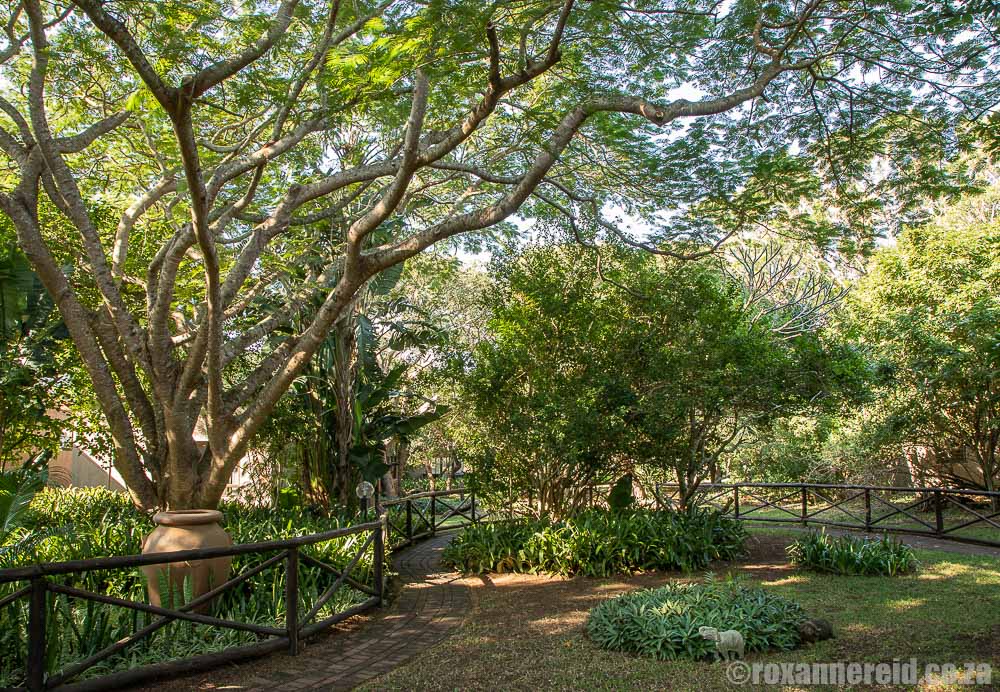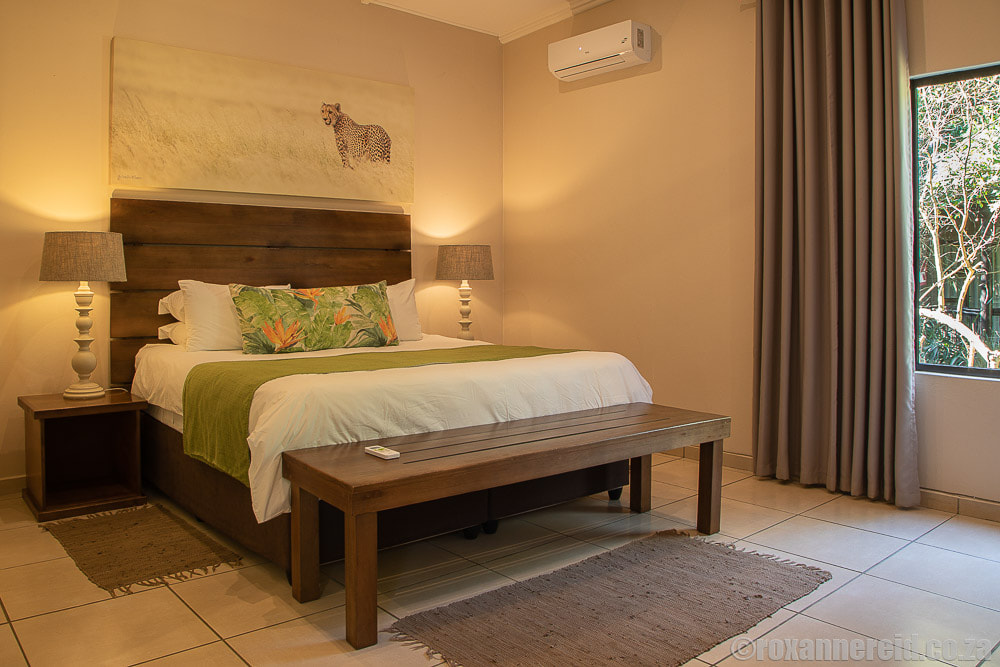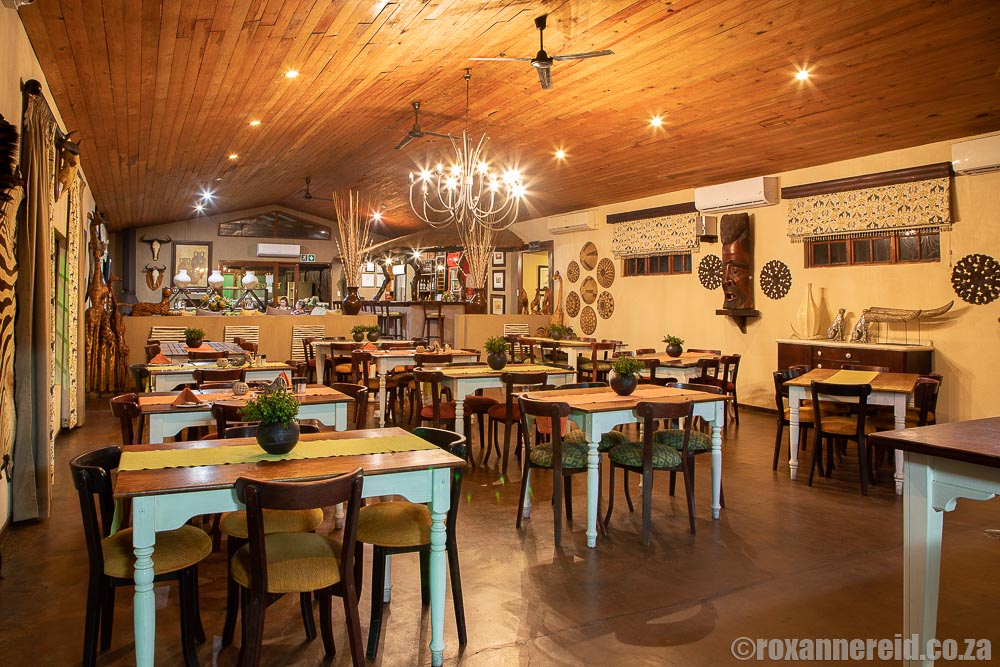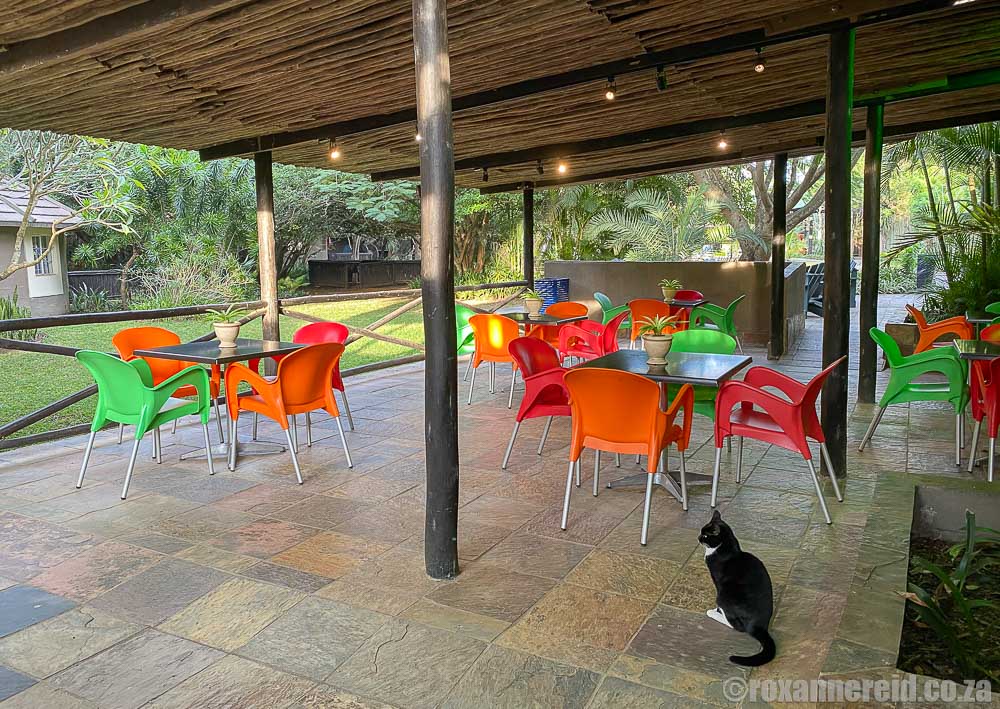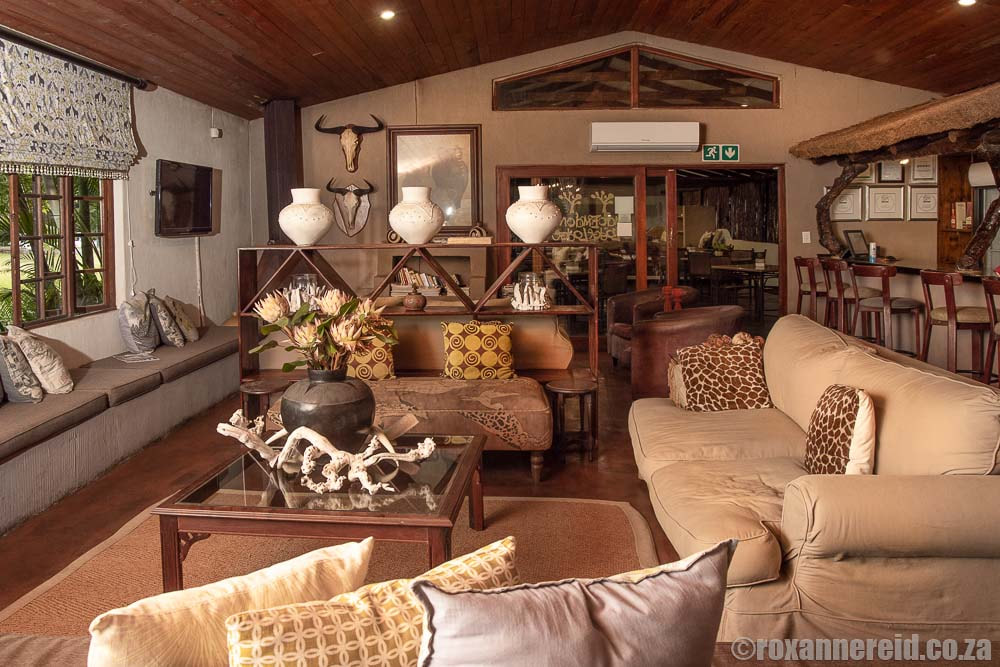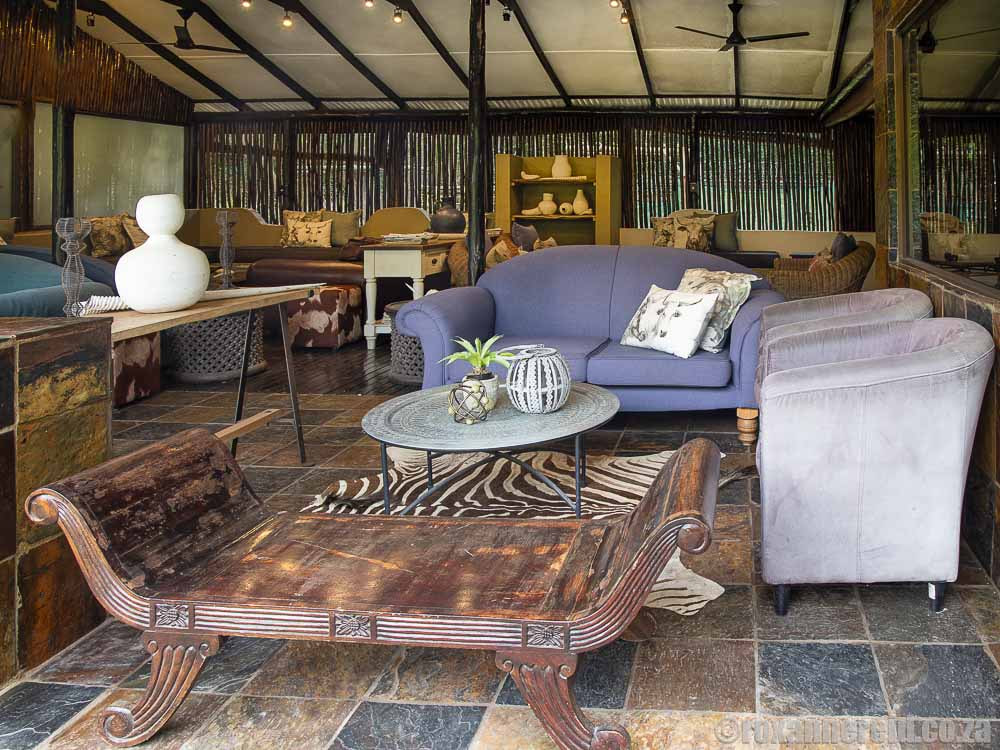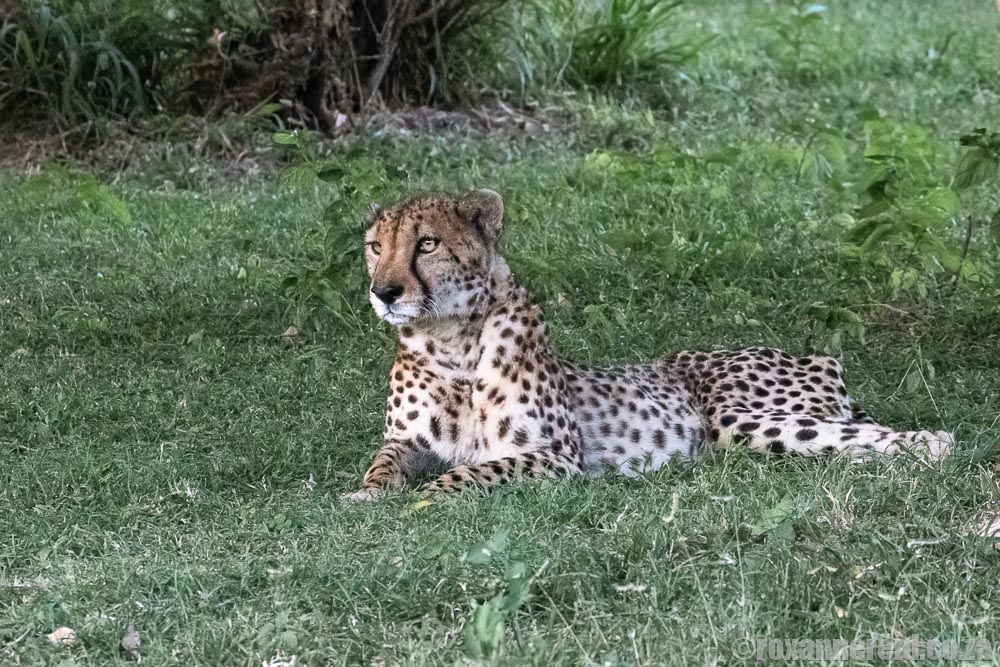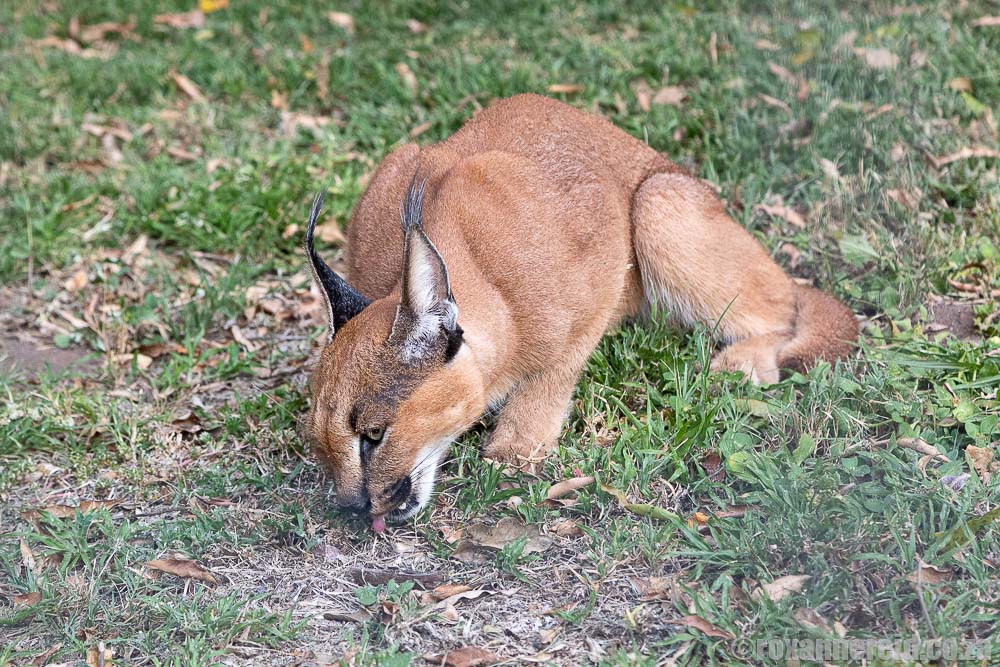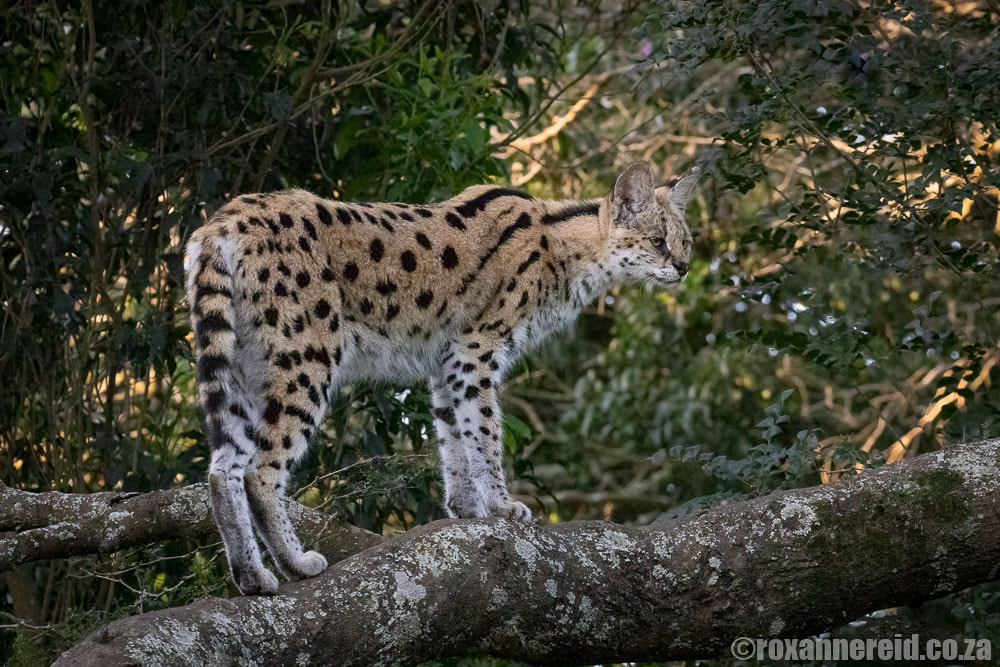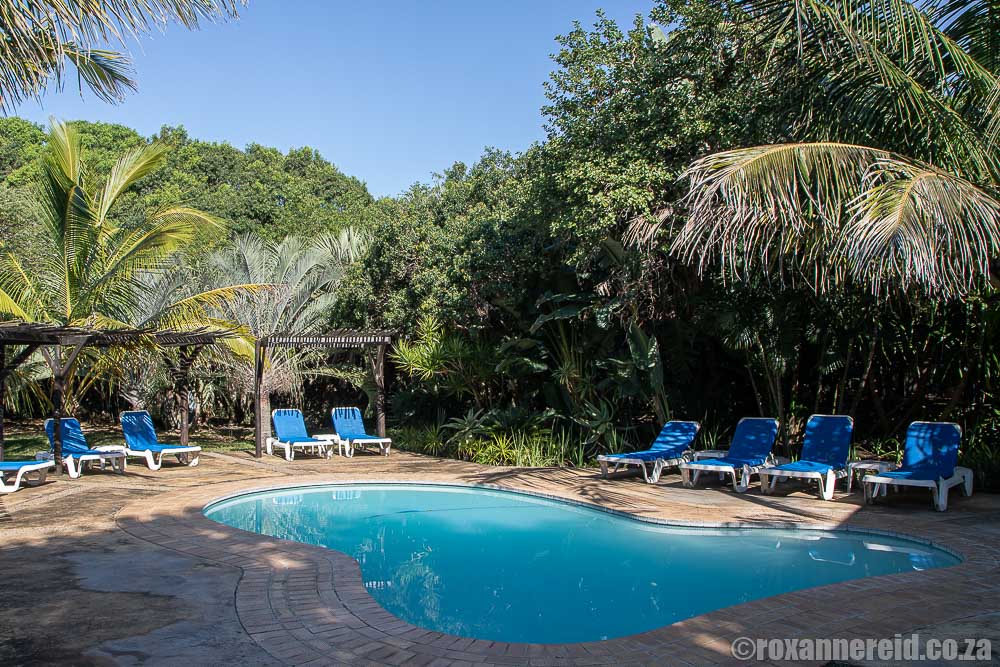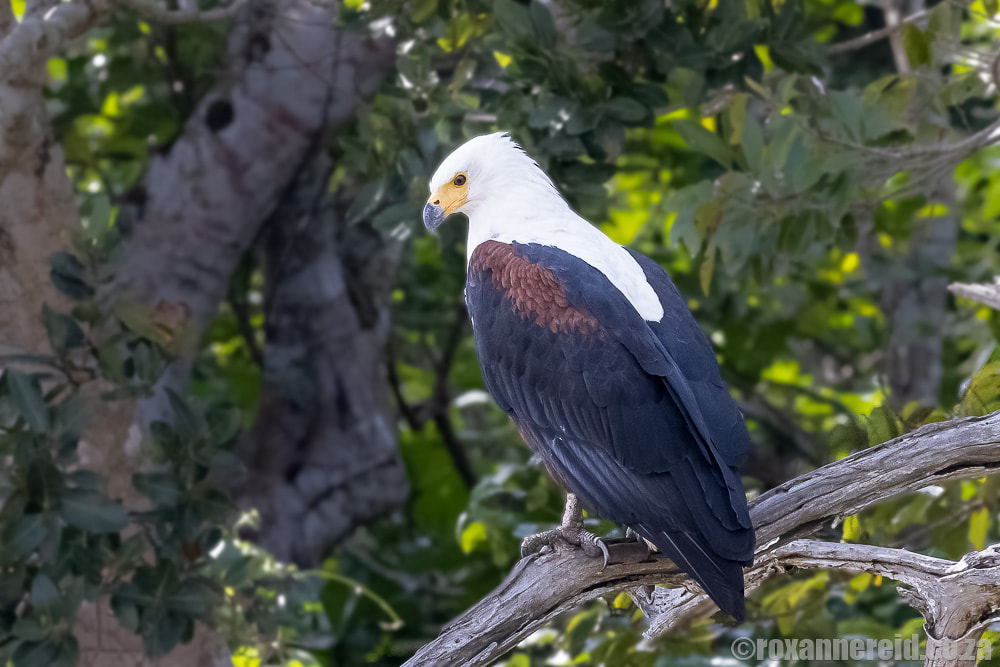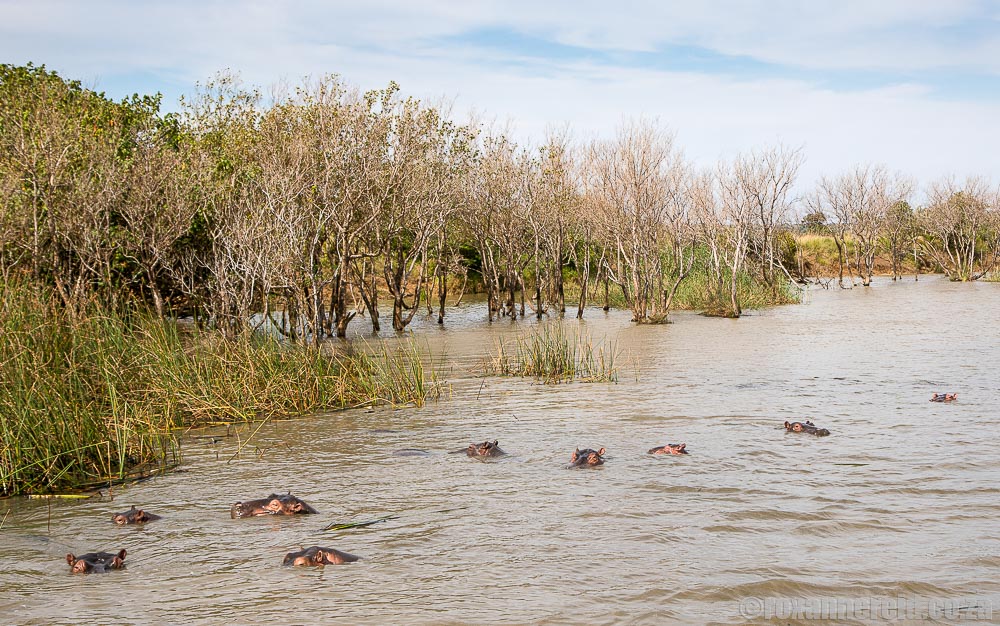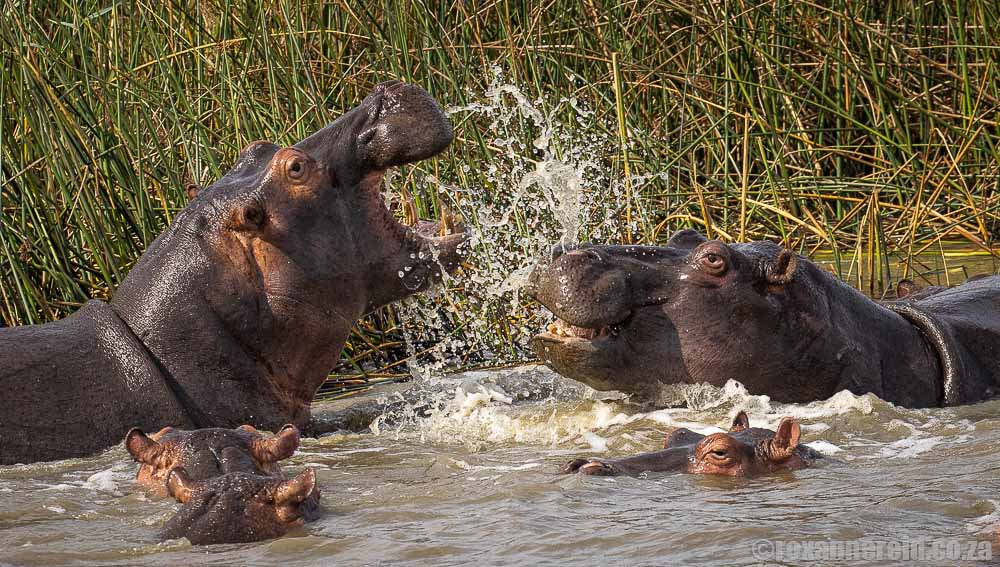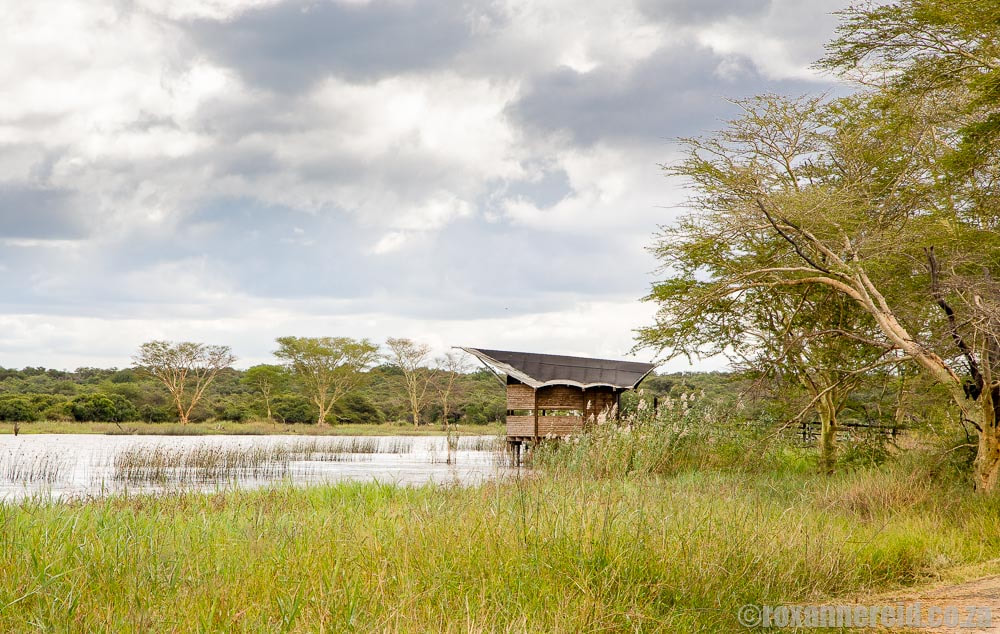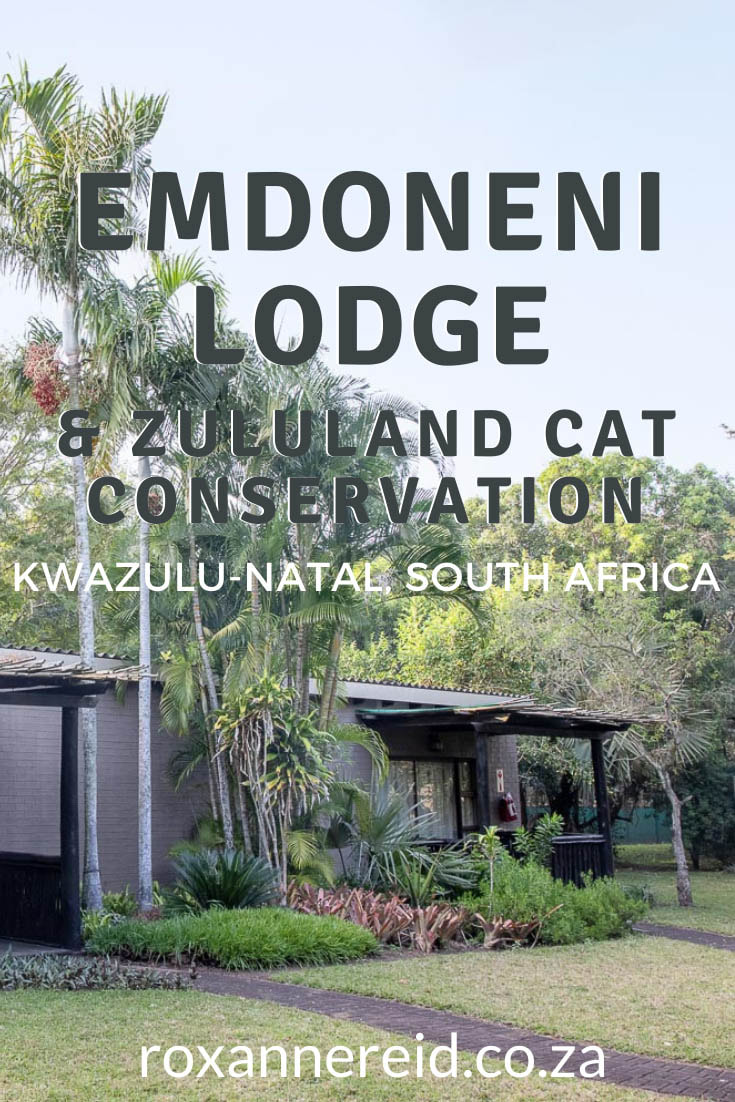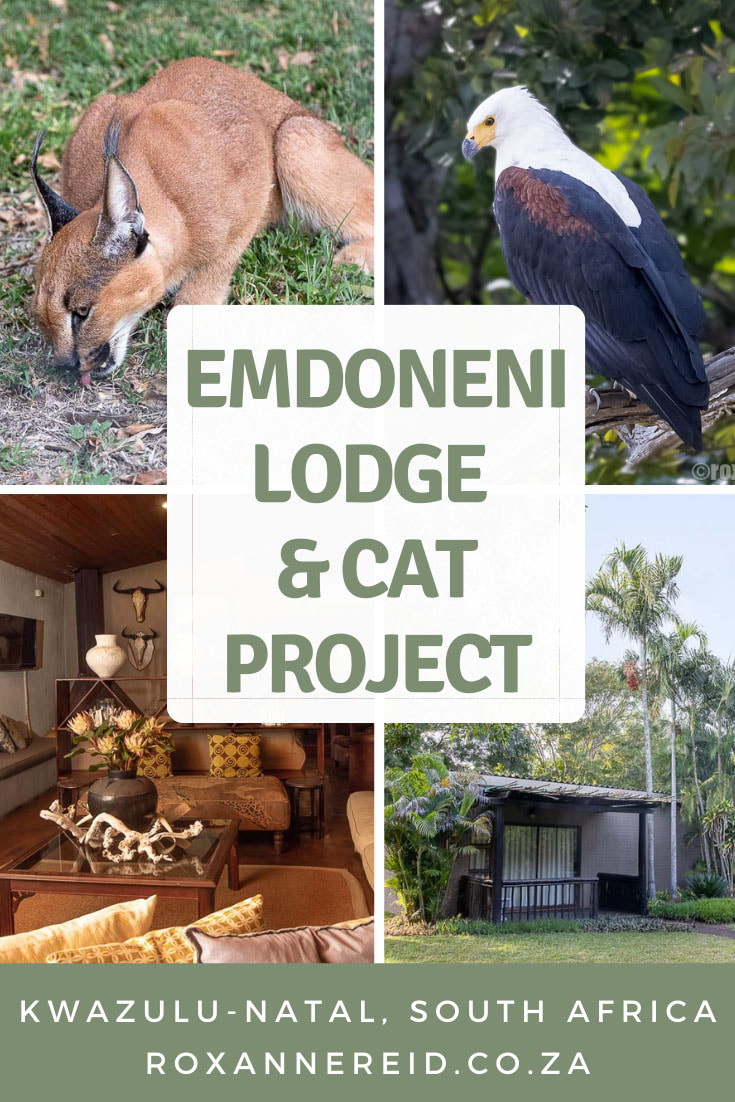By Roxanne Reid
Are you looking for Hluhluwe accommodation? Discover lots of things to do at Emdoneni Lodge. It’s ideally placed to visit the Zululand Cat Conservation Project, see wildlife at Hluhluwe-Imfolozi Park 25km away or visit some of the 10 jewels of iSimangaliso Wetland Park like Lake St Lucia, Sodwana Bay, Cape Vidal or uMkhuze Game Reserve.
Are you looking for Hluhluwe accommodation? Discover lots of things to do at Emdoneni Lodge. It’s ideally placed to visit the Zululand Cat Conservation Project, see wildlife at Hluhluwe-Imfolozi Park 25km away or visit some of the 10 jewels of iSimangaliso Wetland Park like Lake St Lucia, Sodwana Bay, Cape Vidal or uMkhuze Game Reserve.
Emdoneni Lodge, an inviting oasis in the bush, is just off the N2 highway in 20km south of Hluhluwe in northern KwaZulu-Natal. There’s lots of greenery from clivias and elephant ears to groundcovers that are soothing to the eye, while big trees like marula, waterberry and Natal mahogany provide shade. When we visited, the ground was strewn with autumn leaves in colours from brown and russet to copper and gold.
Although there are more than 40 rooms at the lodge, they’re spread around a large area so it feels like a more intimate experience. Each room has a small stoep where you can sit to soak up some sun and enjoy the garden. Inside, we had a king-size bed with a huge photo of a cheetah above it, two easy chairs, a bar fridge, an aircon, and an all-white bathroom. The overall impression was of brightness and freshness, everything immaculately clean and cared for.
We heard bouncing on the roof just before dusk one day and went rushing out thinking a greater bushbaby might be paying a visit. It turned out to be a vervet monkey dancing across our roof and from tree to tree. You might also get a visit from one of the lodge’s free-ranging domestic cats.
With a swimming pool and sundeck, a boma, the Emdoneni spa, two lounges, a bar and two dining areas, there’s lots of space for relaxing between your activities. Décor includes items like indigenous basketry and wooden carvings, with two elegant silver cheetahs in the dining room.
With a swimming pool and sundeck, a boma, the Emdoneni spa, two lounges, a bar and two dining areas, there’s lots of space for relaxing between your activities. Décor includes items like indigenous basketry and wooden carvings, with two elegant silver cheetahs in the dining room.
I liked how separate smaller conversation areas had been created in the large lounges, the bright colours of the chairs on the terrace, and the general air of peacefulness.
If you’re looking for Hluhluwe accommodation that’s a tranquil stopover far from the rat race of the Big City, you’ll enjoy your time at Emdoneni Lodge.
If you’re looking for Hluhluwe accommodation that’s a tranquil stopover far from the rat race of the Big City, you’ll enjoy your time at Emdoneni Lodge.
Zululand Cat Conservation
The most popular thing to do here is to visit the Zululand Cat Conservation Project on the property. One of its main aims is to care for small cats – cheetahs, servals, African wildcats and caracals – that have been orphaned or injured in the wild and need rehabilitation. It started in 1994 with three cheetahs. Servals were added 1996/7 and wild cats in 2004.
The most popular thing to do here is to visit the Zululand Cat Conservation Project on the property. One of its main aims is to care for small cats – cheetahs, servals, African wildcats and caracals – that have been orphaned or injured in the wild and need rehabilitation. It started in 1994 with three cheetahs. Servals were added 1996/7 and wild cats in 2004.
I liked the fact that no touching of the animals is allowed. They do breed cats but guide Megan assured me that the aim was to release the progeny into reserves around the country to widen the gene pool and bring up their numbers, especially cheetah which are so threatened. She explained that some animals can’t be released because of habituation to humans from being pets, or genetic deficiencies, but those targeted for release are first put into a wilding camp out of sight of all humans. There the mother teaches the cubs to hunt and once they’re proficient enough they’re released on to reserves that have no leopard, lion or hyena which would be a fatal threat to them.
Some of the cats like caracals have been pets that have become unmanageable as they matured. Others have been injured when sugar cane fields – where servals like to hunt and have their cubs – have been burnt. They come here to be treated and rehabilitated then rereleased. Sadly, habitat loss through agriculture and forestry is a threat to servals. So far the project has successfully released 25 servals, 15 caracals, 9 African wild cats and 5 cheetahs.
We watched the cats being fed. The caracals – the most aggressive - hissed and spat as they waited for the food to be thrown over the fence. One was a champion jumper, leaping about 3m into the air to catch its food at the top of the arc before landing to scoff it. They are excellent hunters. ‘The largest prey recorded for a full-grown male caracal is an ostrich, which is much bigger than the caracal itself,’ said Megan.
We watched the cats being fed. The caracals – the most aggressive - hissed and spat as they waited for the food to be thrown over the fence. One was a champion jumper, leaping about 3m into the air to catch its food at the top of the arc before landing to scoff it. They are excellent hunters. ‘The largest prey recorded for a full-grown male caracal is an ostrich, which is much bigger than the caracal itself,’ said Megan.
She told us about the weight adult cats typically reach, their gestation periods and lifespan in the wild, though of course in captivity they live longer. They have one old serval here that’s 18 years old when the usual lifespan in the wild is around 10. ‘Servals are the second fastest cats, reaching up to 80km/h. Of course, with them the speed is to prevent them from becoming food for bigger predators whereas with cheetahs it’s an aid to catching its food.’
Cat tour times from September to April are 10:30 and 16:30 every day. In the winter months from May to August, tours take place at 10:30 and 16:00 daily. If you’re keen to see the cats being fed, choose the afternoon tour. You don’t have to be staying at Emdoneni Lodge to go on a cat tour; you can book as a day visitor.
5 other things to do at Emdoneni
Apart from enjoying the tranquil gardens and shady trees around the lodge, and visiting the Zululand Cat Conservation Project, here are some other things to do during your stay.
Cat tour times from September to April are 10:30 and 16:30 every day. In the winter months from May to August, tours take place at 10:30 and 16:00 daily. If you’re keen to see the cats being fed, choose the afternoon tour. You don’t have to be staying at Emdoneni Lodge to go on a cat tour; you can book as a day visitor.
5 other things to do at Emdoneni
Apart from enjoying the tranquil gardens and shady trees around the lodge, and visiting the Zululand Cat Conservation Project, here are some other things to do during your stay.
- Take a cooling swim in the pool or just lounge around with a cold drink and a good book.
- Take a walk along the trails between the lodge and the main gate to see animals like impala, duiker, reedbuck, zebra and nyala. There are no predators in the trails area so you’re perfectly safe.
- Keen birders will want to go bird-watching along the walking trails and around the garden. You might spot species like brownhooded kingfisher, purple-crested turaco, narina trogon, yellow-throated twinspot, mousebirds and robins.
- Enjoy meals in the restaurant or on the terrace. The food is good, with the menu including dishes like butternut soup, stuffed chicken breasts, pork belly, linefish (fresh bream just caught by the owners), cheesecake and a chocolate pudding that was crisp outside and squidgy inside. My breakfast omelette was also delicious and the service was unfailingly friendly and efficient.
- Indulge yourself with a soothing massage at the Emdoneni spa. Choose from aromatherapy massage, Indian head massage, Swedish massage or deep-tissue sports massage. The spa also offers manicures and pedicures.
Further afield: St Lucia boat tours
We drove to St Lucia one day to join Heritage Tours and Safaris for a boat trip on the St Lucia estuary. It’s about 60km or an hour’s drive away. Our cruise departed from the Siyabonga Jetty at St Lucia.
Affable guide Mdu Mncwango gave us some background on St Lucia and the wider iSimangaliso Wetland Park. The Zulu word means ‘place of miracles’. This UNESCO World Heritage Site covers 3 280 square kilometres of natural ecosystems. There are five ecosystems in the south, including marine, coastal dune forest (Maphelane is a 187m sand dune, the second highest in the world), Cape Vidal, savannah grassland like uMkhuze Game Reserve, and Lake St Lucia which is home to some 14 000 hippos and 1000 big crocs in a 24km stretch.
Our first sighting after launch was an African fish-eagle perched in a tree overhanging the water. Mdu said its eyesight was 200 times better than a pigeon’s – useful for its habit of hunting fish within 15cm of the water surface. It mostly hunts from a perch but also sometimes while soaring over the water.
He explained that the St Lucia mouth had recently been opened and that salty water coming in from the ocean would kill the reeds that had been encroaching on the sides of the lake, making it wider again. Past the reeds was a line of white mangroves. ‘They may look dead because they have no leaves,’ he explained, ‘but they’re not.’ When the water gets salty they first sacrifice their leaves, then one branch at a time. It takes about four-and-a-half to five years for a mangrove tree to die and fall down.
He explained that the St Lucia mouth had recently been opened and that salty water coming in from the ocean would kill the reeds that had been encroaching on the sides of the lake, making it wider again. Past the reeds was a line of white mangroves. ‘They may look dead because they have no leaves,’ he explained, ‘but they’re not.’ When the water gets salty they first sacrifice their leaves, then one branch at a time. It takes about four-and-a-half to five years for a mangrove tree to die and fall down.
Other indicators of saltiness in the estuary are the wild hibiscus trees along the water’s edge. ‘When the water is fresh the flowers are yellow, when it’s slightly salty they’re orange and when it’s very salty they turn red.’
It was a windy day and the water was splashing on the front of our steady boat/pontoon as we steered into the wind. We were surprised not to see any crocs, but Mdu explained that most of them were now further downstream nearer the sea. Lots of fish had been coming in after the mouth was opened so the pragmatic crocs moved down there for better fishing.
We saw a pod of bull and young male hippos hiding at the edge of the vegetation, then a bigger mixed group of about 35-40 young ones and females with a single dominant bull. They were grunting at each other and some young ones were play-fighting, splashing, testing the size of their mouths against the competition.
It was a windy day and the water was splashing on the front of our steady boat/pontoon as we steered into the wind. We were surprised not to see any crocs, but Mdu explained that most of them were now further downstream nearer the sea. Lots of fish had been coming in after the mouth was opened so the pragmatic crocs moved down there for better fishing.
We saw a pod of bull and young male hippos hiding at the edge of the vegetation, then a bigger mixed group of about 35-40 young ones and females with a single dominant bull. They were grunting at each other and some young ones were play-fighting, splashing, testing the size of their mouths against the competition.
But be in no doubt that if a male were to seriously challenge the dominant bull, things would get ugly. The scars on his body are evidence of past battles. Bulls are very territorial in the water but not on land. The hippo is the second biggest killer of humans in Africa after the mosquito, mostly when they’re on land and feeling threatened.
Heritage Tours and Safaris offers sunset cruises on the estuary too. We saw only one other boat during our two-hour trip. Mdu said that before the Covid-19 pandemic the place was humming with five companies and nine boats all on the water multiple times a day. It’s a sad reminder of the devastation that the pandemic is still inflicting on South Africa’s tourism sector.
5 other things to do in the wider area
Heritage Tours and Safaris offers sunset cruises on the estuary too. We saw only one other boat during our two-hour trip. Mdu said that before the Covid-19 pandemic the place was humming with five companies and nine boats all on the water multiple times a day. It’s a sad reminder of the devastation that the pandemic is still inflicting on South Africa’s tourism sector.
5 other things to do in the wider area
- Hop onto an open 4x4 safari vehicle at Emdoneni Lodge and go for a guided game drive at Hluhluwe-Imfolozi Park (25km away). The park is famous for its efforts in the 1950s to bring the white rhino back from the brink of extinction. It’s a place to see rhinos, as well as the rest of the Big 5 (leopard, lion, elephant and buffalo), wild dogs, giraffe, zebra and various antelope species. Choose from an early morning (my favourite) or late afternoon drive.
- Go self-driving at uMkhuze Game Reserve (66km away). The reserve has the Big 5 and wild dogs. With 420 species of birds recorded, it’s also a mecca for birders. My favourite places to spend time at uMkhuze are the hides at waterholes and pans, which are ideal for watching birds and game coming to drink, as well as for photography.
- Go snorkeling at Sodwana Bay (105km away) or Cape Vidal (60km away). Both lie within the UNESCO World Heritage Site of the iSimangaliso Wetland Park.
- Go deep-sea game fishing at Sodwana Bay or Cape Vidal.
- Enjoy a boat cruise or tiger fishing at Lake Jozini (110km away). Remember that the summer months of September to April are best for tiger fishing.
Game reserves in KZN for a South African safari
Manyoni Game Reserve- Big 5, wild dogs and a pangolin
Like it? Pin this image!
Copyright © Roxanne Reid - No words or photographs on this site may be used without permission from roxannereid.co.za
